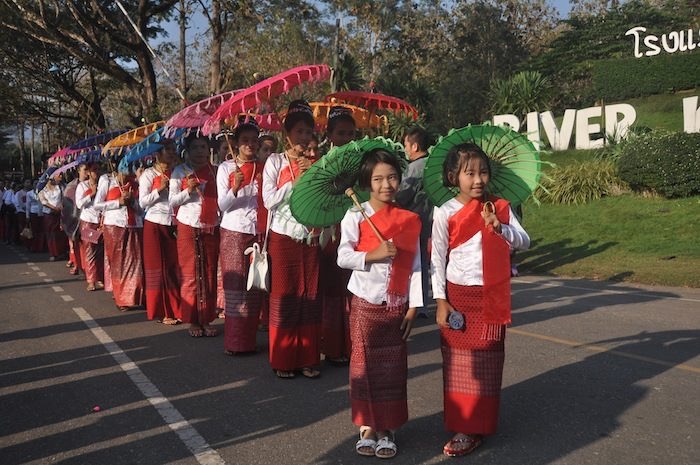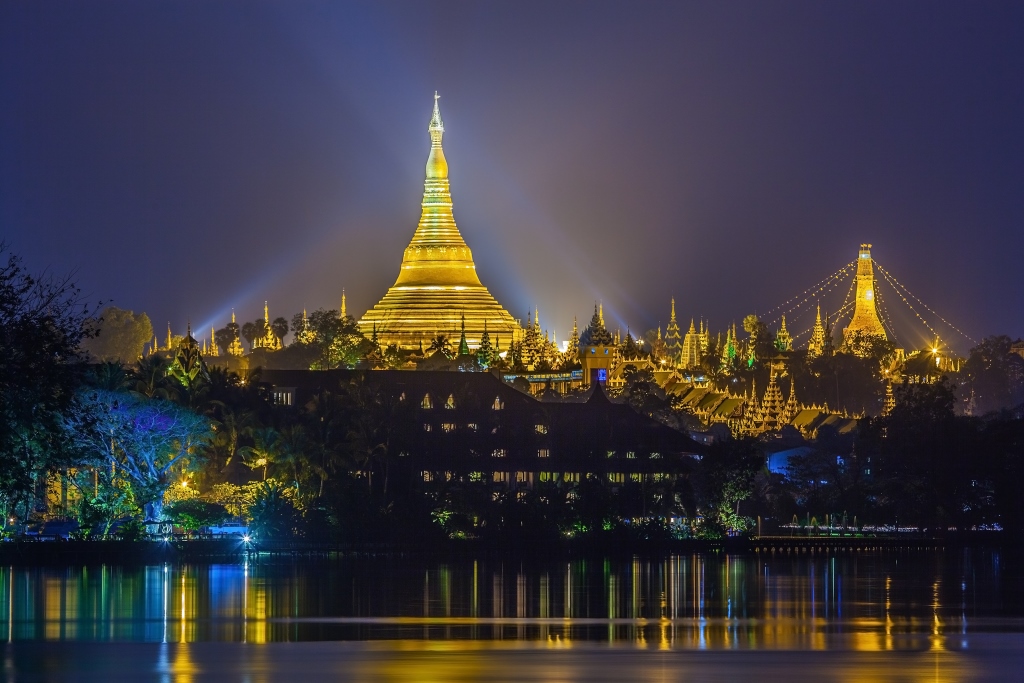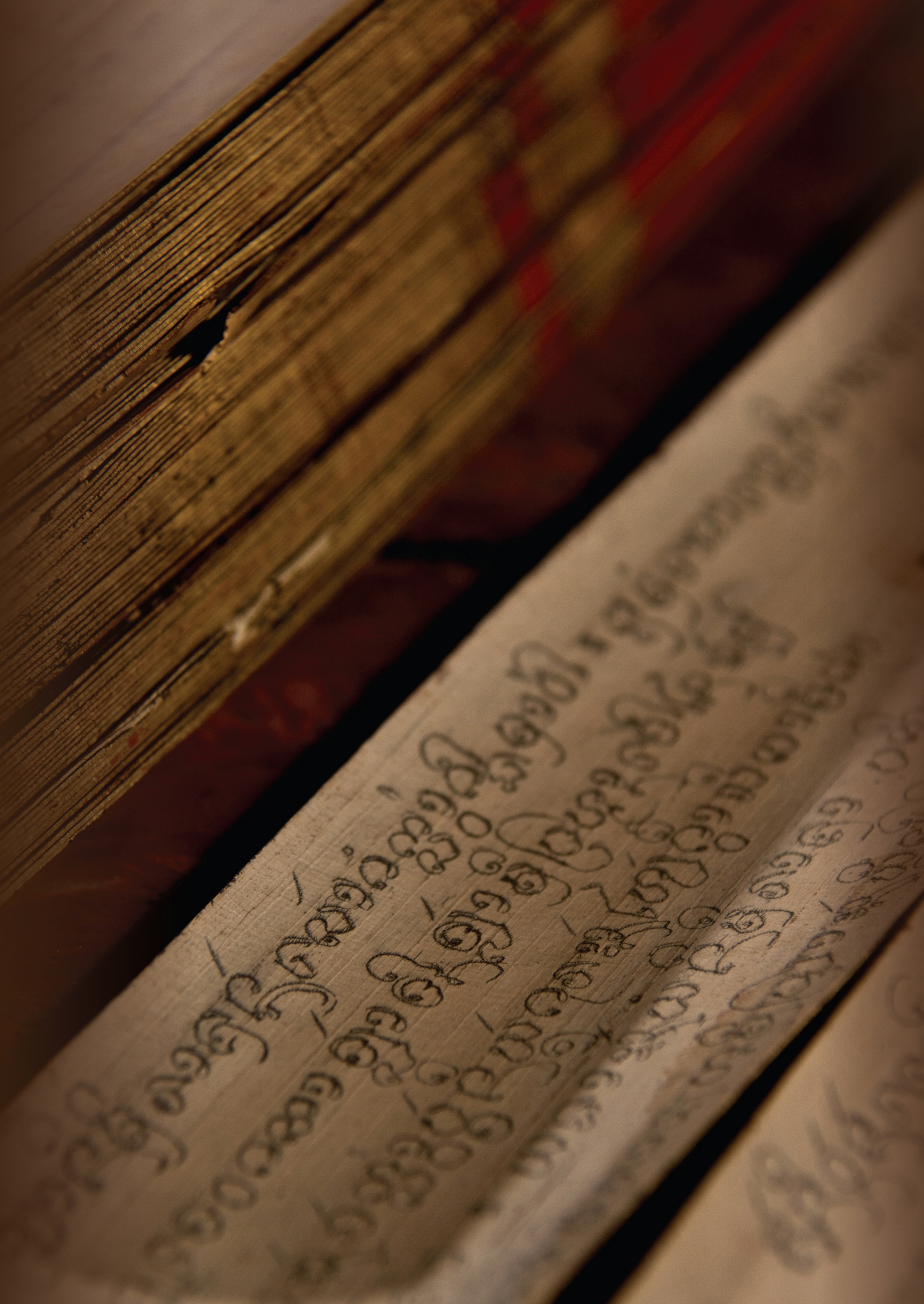Mission Statement:
“The Mon Language Preservation Organization (MLPO) strives to restore traditional Mon literature, preserve the Mon language, and safeguard it against the danger of extinction.”
MLPO’s Objectives:
The Mon Language Preservation Organization (MLPO) was formed to save and restore classical Mon literature and archaic Mon vocabulary through intensive research as well as to preserve the Mon language, the use of which is continuously dwindling and the existence of which is increasingly threatened under continuing Burman ethnocentric rule in Burma (Myanmar). MLPO shall also work to increase modern knowledge and resources in the Mon language in all aspects of life through quality translations from English.
THE MON PEOPLE, HISTORY & LANGUAGE
 Mon Civilization:
Mon Civilization:
There are over a million Mon speaking people living in Burma (Myanmar) today. The Mon language is a member of the Mon-Khmer language family, which belongs to the Austroasiatic group. Mon civilization was among the most distinctive and influential in precolonial Southeast Asia. Significant aspects of the language, art and architecture, political and legal arrangements, and above all the religion of the great Thai and Burman/Burmese civilizations were derived from the earlier Mon society, which acted as a vector in the transmission of Theravada Buddhism and Indianized political culture to the region. For more than a thousand years, neighboring societies have been deeply influenced by Mon cultural, religious and political concepts. It is this phenomenon that gives the Mon a special place in the history of Southeast Asia.
 The Mon: A People Without a Country:
The Mon: A People Without a Country:
The Mon people had their own kingdoms in both old Siam (Thailand) and old Burma (Myanmar). The old Mon kingdoms in Burma flourished from the 6th to the 18th centuries, whereas the old Mon kingdoms in old Siam flourished from the 5th to the 13th centuries. For the period of more than two and a half centuries since the fall of the last Mon kingdom of Hamsavati in 1757, the Mon people have become a people without a country and Mon has lost its place as an important language. For the Mon people everywhere, the Mon language has at best become only a second language: Burman/Burmese is their first language in Burma (Myanmar), Thai in Thailand, and English among the Mon immigrant populations in the United States, Canada, England, Australia and New Zealand.
 The Mon People’s Struggle to Defend Mon Identity:
The Mon People’s Struggle to Defend Mon Identity:
Mon was a rich and mature language developed a thousand years earlier than the Burman/Burmese written language. However, over the period of two and a half centuries since the fall of the last Mon kingdom in 1757, many have believed that Mon is a dying language and that the people are in the twilight of their history. The Mon people have struggled to defend their historical Mon identity from assimilation into that of the Burman majority. The ethnic non-Burman peoples, including the Mon, are not allowed to study their own ethnic languages in state schools, whereas Burman/Burmese is made the only official language in the country and taught as a major subject from kindergarten through university. The Mon people have consistently demanded that the Mon language be used as an official language in Mon State in Burma (Myanmar). However, as of yet the Burmese government has not met this demand.
 Old Mon Palm-leaf Manuscripts in Thailand:
Old Mon Palm-leaf Manuscripts in Thailand:
After his invasion and annexation of the Mon kingdom in 1757, the Burman king, Alaungpaya, launched a genocidal operation against the Mon people, exterminating tens of thousands of innocent civilian Mon men, women, children and Buddhist monks he could capture by the most cruel methods. The Burman king also destroyed almost all the Mon palm-leaf manuscripts and stone inscriptions. Hundreds of thousands of the then Mon populace fled into Siam (Thailand) for safe haven, taking along with them the surviving palm-leaf manuscripts. All these palm leaves have been kept at many of the 200 Buddhist monasteries of the Mon descendents in Thailand until today. All these palm-leaf manuscripts together are estimated to make more than 3000 books, small and thick. These old Mon manuscripts have remained on palm-leaf until today and have not been printed on paper and typed and saved on computer in order to be easily accessible for general Mon readers and researchers yet.
 Modern-day Self-help Mon Literacy Movement:
Modern-day Self-help Mon Literacy Movement:
Over the last four decades, patriotic Mon youth and monastic communities have taken a united effort in realizing a self-help summer Mon literacy movement throughout Mon State, teaching tens of thousands of Mon children and adults the basic Mon literature each year. There were approximately 90,000 students according to the recent statistics. This self-help Mon literacy movement provides the only glimmer of hope for the Mon people in the country to learn their own language and literature.
The Dwindling Status of the Mon Language Today:
On the other hand, the use of the Mon language has been dwindling. Only the vocabulary of everyday usage, estimated to be no more than 10,000 words, remains in use today. Most of old Mon words have fallen into disuse and no one knows their meanings. Bringing more than 100,000 old or dead Mon words back into life is a herculean task that has challenged the few Mon-language scholars and researchers today. The United Nations specialized agency, UNESCO, has stated that Mon is a vulnerable language. The existence of the Mon language is increasingly threatened in Burma (Myanmar) today.
